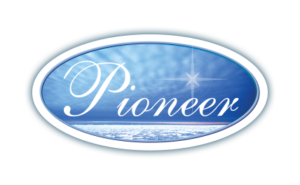Employers looking for alternative group health insurance options should consider the ARU stop loss group captive. The Pioneer Group Captive writes health insurance for a diverse group of organizations and provides access to premier networks and cost-containment strategies. Midsize companies can leverage the Pioneer Group Captive to take control of their employee benefits.

What Is a Group Captive?
In the conventional insurance model, the insured pays premiums to an insurance company in exchange for coverage. The insurance company is responsible for handling claims and paying losses, but it also keeps any underwriting profits and investment income.
In the captive insurance model, the insured owns the insurance company. This means the insured retains ownership of the premiums, investment income, and profits. The insured also retains control over claims handling and is responsible for losses.
The Pioneer Group Captive is a captive reinsurance company owned by multiple members. By joining a group captive reinsurance program, members reduce their insurance costs while exercising greater control over contracts and services.
Who Can Join an ARU Employee Benefits Captive Insurance Company?
Captive insurance programs are often associated with large Fortune 500 companies, but group captive insurance allows midsize companies to enjoy the benefits of the captive model.
The Pioneer Group Captive program is suitable for companies with 75 to over 1,000 employees. Good candidates are supportive of wellness, take a long-term approach to business, and have a stable financial condition. If you’re looking for greater control and stability in your employee benefits (and your company meets the above criteria), the Pioneer Group Captive program may be the perfect match for your needs.
How Does the ARU Group Captive Model Work?
The Pioneer Stop Loss Group Captive uses a three-layer system to cover claims and provide an opportunity for profit while controlling risks:
In this model, group members don’t have to choose between limiting their risk exposures and accessing profits: they do both. Although members take on some risk, it is capped by the proprietary ARU group captive structure and stop-loss protection. This allows members to budget for employee health insurance costs with confidence.
Members still have the opportunity to earn dividends from the group dividend pool, which incentivizes members to control their losses. In conventional insurance models, the insurance company or stop-loss carrier retains any underwriting profit or investment income, meaning the insured forfeits these funds. With the captive model, however, the members retain the profits.
How Do ARU Group Captive Members Control Losses?
The Pioneer approach minimizes volatility under a one-of-a kind structure. However, since members receive dividends when losses are lower than expected, members are still motivated to do their part to keep costs under control.
One way to control costs is to embrace wellness. The Pioneer Group Captive program encourages wellness programs to help members. They also have access to a variety of pass-through Pharmacy Benefit Managers to control prescription drug costs.
Members can take further control of their costs by understanding exactly what those costs are. In the conventional insurance model, employers may have a limited understanding of their main cost drivers. This (combined with a lack of control over plan design) means employers often have their hands tied when searching for ways to reduce costs. The Pioneer Group Captive is different and provides direction to targeted cost control measures.
Members have access to an industry-leading data analytic platform and actuarial data. Full transparency means members have information on losses and program costs through special reporting as well as their proprietary shareholder reports. As a result, members are able to identify loss drivers and take steps to control those losses.
Why Should Employers Consider Captive Insurance for Employee Benefits?
Employers are stuck between a rock and a hard place when it comes to employee benefits.
On the one hand, they need to offer high-quality benefits to attract and retain talent. Since many employers are dealing with talent shortages and high turnover rates as experienced workers reach retirement age, creating an employee benefits package that boosts retention and recruitment is critical.
On the other hand, costs are rising. Health insurance costs continue to surge every year, often far in excess of regular economic inflation rates. Employees are dealing with higher premiums and out-of-pocket costs, which is straining family budgets. Employers are also facing rising costs, which add to the overall cost of having employees and doing business.
For many companies, the current model feels unsustainable. The Pioneer group captive insurance model provides an alternative. Employers take control of costs, and employees have access to many of the nation’s largest PPO networks as well as to A+-rated insurance and reinsurance.
When Is a Good Time to Go Captive?
An increasing number of companies are choosing to go captive. Rising costs are pushing them to explore new options – and the unique ARU ownership based captive insurance model stands out as a winner.
If you’re wondering whether this is a good time to go with the ARU Pioneer stop loss group captive, ask yourself the following:
How Can You Get Started?
If you think your company meets the requirements for group captive membership, reach out to ARU to get started. We’ll need a little information from you to evaluate your eligibility for membership.
